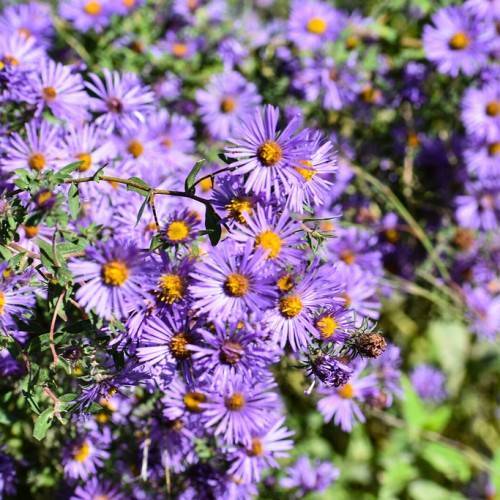
New England aster
Symphyotrichum novae-angliae
Cycle:
Herbaceous Perennial
Watering:
Minimum
Hardiness Zone:
4 - 8
Flowers:
Flowers
Sun:
Full sun
Soil:
Sandy Loamy Clay Humus
Leaf:
Yes
Growth Rate:
Low
Maintenance:
Moderate
Drought Tolerant:
Yes
Salt Tolerant:
Yes
Invasive:
Yes
watering
New England aster (Symphyotrichum novae-angliae) should be watered deeply every 7-10 days, or as often as needed. Soil should be kept evenly moist and never be allowed to dry out. In general, it’s best to err on the side of watering too much rather than too little. Try to use lukewarm water and avoid over- or underwatering. During summer months, this plant may need more frequent watering. Be careful to keep the soil evenly moist but not waterlogged, as poor drainage may lead to root rot.
sunlight
New England asters require direct sunlight for about 6-8 hours a day in order to thrive. An ideal location for the plant would be 1 that receives several hours of morning and late afternoon/early evening sunlight, as this will promote optimal growth and flower production. Using an area that receives sunlight for the majority of the day may cause the plant to become stressed, but New England asters can withstand some extended sunlight. Hot midday sun should be avoided as it can produce too much stress on the plant and inhibit its growth.
pruning
New England aster (Symphyotrichum novae-angliae) should be pruned in early to mid-spring (March-May) before flowering. Pruning should involve selectively removing only the dead and damaged stems and foliage and deadheading of flowers. It should only be pruned to 1-third of its height to maintain it's natural size, shape, and form. Avoid pruning too late in the season since this can prevent blooming. Always use clean, sharp tools when pruning and ensure to sterilize them between plants to prevent spreading of any diseases.
